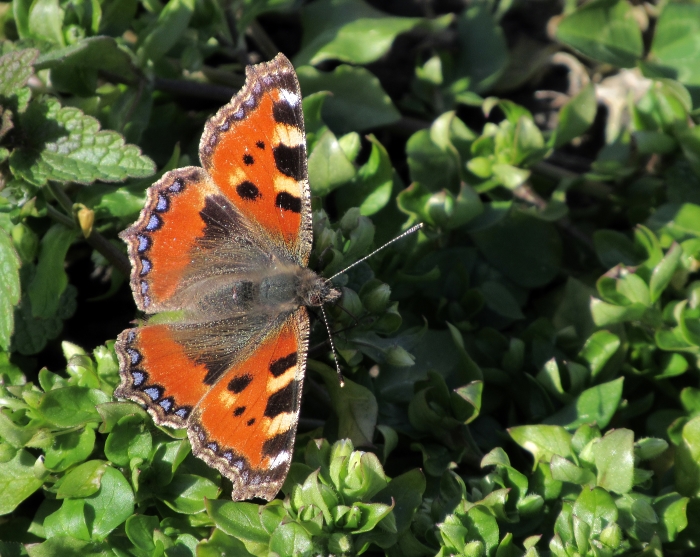
Switzerland, March 2018

Suffolk, UK, February 2019

Switzerland, February 2018
Small
Tortoiseshell
Aglais urticae
Refresh page if pictures don't load fully:





Switzerland, February 2014

Switzerland, March 2014

Switzerland, March 2014

Switzerland, January 2016

Switzerland, March 2015

Switzerland, June 2006

Switzerland, 3rd February 2007

The underside is camouflaged for hibernation

Switzerland, 6th February 2006

Switzerland, 3rd February 2006

Switzerland, March 2006. The butterfly is on a ski piste (I moved it for its safety!)

Suffolk, 1978

Eggs, beneath nettle, Switzerland, April 2011

Caterpillars, Switzerland, May 2018

Caterpillars, Switzerland,
May 2019

Older, more dispersed, caterpillars, Switzerland, May 2014

Switzerland, May 2014

Caterpillar pupating




The small tortoiseshell is one of the most familiar butterflies, being common throughout Europe and on the wing from March or earlier until November or even December. I have seen small tortoiseshells in every month of the year (but not in every month of any single year) and in every European country I have visited, I think. However, this should not count against the fact it is also one of the most beautiful - something often overlooked!
In the Alps, the small tortoiseshell is the only butterfly to emerge while there is still plenty of snow around and it even seems to enjoy cruising over the pistes. In the Rhône Valley it typically wakes up towards the end of January or the beginning of February, usually shortly after the first Queen of Spain fritillaries have flown. I regularly visit a favourite site where Queens defend territories alone until the first small tortoiseshells emerge and thereafter tend to get bullied by the more agressive tortoiseshells. Because of this very early start to the year, and because nettles are available pretty much all year round in much of Europe, small tortoiseshells are able to fit in two or sometimes more broods during a single season in most of Europe (there is just one generation in the far north and at altitude). Caterpillars from eggs laid by the hibernating generation feed up during April and May and are usually on the wing in June. These summer butterflies then produce at least one further generation before their offspring enter hibernation again. Small tortoiseshells are deep hibernators. Some individuals will sleep from late July through to March before waking up perfectly fit to fly, feed and breed - unlike red admirals, for example, which need a shorter winter.
Eggs are laid in batches on the undersides of nettle leaves. The caterpillars then feed gregariously until the last instar, when at some stage before pupation they wander off individually.